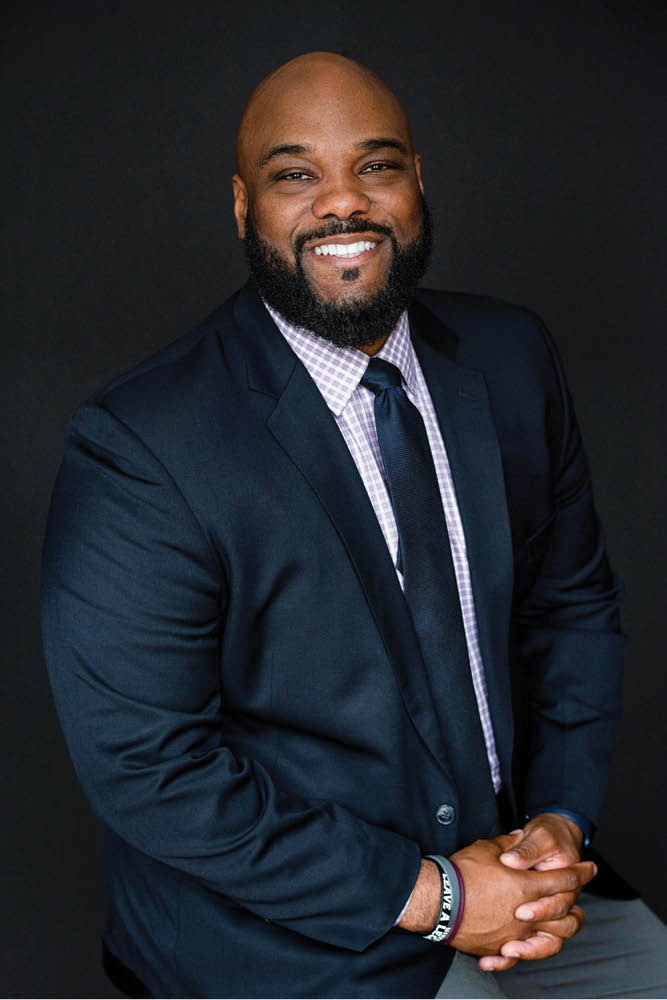Advocacy Agenda: November 2023

Maryland has a long tradition of bipartisan education reform, and our public schools have historically ranked high nationally. That’s not to say we don’t have challenges; among them, equitable funding and opportunities across all our districts. When the recent legislation, “Blueprint for Maryland’s Future,” (which had been in the works for many years) was released, it included many positive elements for school reform. There were also elements that posed serious challenges to the job of school administrators. The legislation required assistant principals to spend 20% of their time teaching in the classroom, as a possible teacher of record.
That was jarring for school leaders around the state and launched them into action. There didn’t seem to be much consideration of the logistics for how this would work and the impact on schools and school leaders. Just to be clear: School leaders don’t oppose spending time in the classroom; we look forward to spending time with students and watching learning take place. We all entered this profession because we love teaching students. That’s what excites us while serving as school leaders.
This legislation showed a serious lack of understanding about the job of school leaders. In fact, despite repeated requests to spend a day with a school principal, the people proposing and enacting this legislation rarely did so. School leaders do not have a “typical” day, and anyone who spends a day with us learns that very quickly. School leadership is—by definition—an out-of-the-box job.

A Teaching Assignment Shortchanged Students
One of the years when I (Michael) was an assistant principal, it was the principal’s philosophy that all APs should teach. It was a terrible experience. It wasn’t because I didn’t like teaching; I loved it. But I had an eighth-grade honors English class, and with all the other unscheduled duties (such as parent meetings, calls about student discipline, or facility issues) that were part of my job, I had to find a substitute two or three days a week. The kids got frustrated with me because I wasn’t there. They were ready to learn, and many of them were trying to get into prestigious high schools. So how I could I help make them ready if I wasn’t giving them consistent instruction? I don’t like it when kids don’t get what they need.
When I (Addie) opened a new high school, I was asked by a math teacher to co-teach one of his algebra classes. While I enjoyed every minute of teaching with him, I could not always attend class due to other needs, circumstances, and requests that could not wait and infringed on my time in the classroom. It was disappointing for the teacher, the students, and me.
One reason a swift response to this legislation gained traction was that the committee that drafted it did not spend time talking with school-based administrators and gathering input. While there were administrators and executive directors on the state-level advisory committee, the legislation about assistant principals teaching 20% of the time was not discussed in those meetings. Even though this was the largest education legislation in our state in the last decade, school leaders’ input was minimal.
When we saw this language for the first time, we sprang into action. The Maryland Association of Secondary School Principals (MASSP) had not been traditionally involved with education legislation; however, this was a big deal. We do not have a full-time lobbyist, our members are not part of a union, and we rarely meet with political leaders. When MASSP’s former president spoke at an Accountability and Implementation Board (AIB) meeting about why the 20% proposal was misguided, the chair of the committee said that if a university chancellor can teach, why can’t a principal teach? That showed a total misunderstanding of our jobs, and really angered administrators across the state.
An Uphill Battle
A letter-writing campaign ensued; we collected about 60 letters and sent them to the AIB, the body responsible for suggesting, revising, and implementing legislation. We also attended meetings, and we asked our principals to talk to their legislators. It was really an uphill battle for us.
It became clear that we had to be careful not to sound like we were whining. One key message we conveyed was that our jobs do not have consistent schedules. At any given moment, it can be all hands on deck, and administrators can’t ask students and teachers to depend on us being in the classroom at a certain time every day. We expressed the need to be more flexible in how we participate in the education process for students.
Knowing that other state organizations had more influence legislatively, we reached out to the Maryland Association of Elementary School Principals, the Public School Superintendents’ Association of Maryland, and the Maryland Association of Boards of Education. By working together, we succeeded in advocating for improved language embedded in a different bill, which passed. The language changed from “teaching” to “participating.” The law now says that assistant principals “shall participate in classroom activity involving direct interactions with students for at least 20% of their working hours and spend a portion of the remaining time on other related activities, including setting priorities for the subject level, departments, or grade levels of the school and fulfilling specialized roles such as head of professional development.”
They Hear Us Now
This was a huge win for school administrators in Maryland. We now have much more flexible language that will allow an assistant principal, for example, to participate in a panel discussion, a debate, or a presentation. Co-teaching is another option, when it can work, with the administrator and the teacher sharing the instructional duties. There are so many options that will focus on being an instructional leader.
A great deal of time and effort went into changing just this one small piece of legislative language. We now know that our efforts helped; our voice, advocacy, collaboration, and persistence made a difference for public school administrators in Maryland.
Elected leaders and others are listening to us and requesting our input on important legislation and educational decisions. We are asked to participate on committees, and members of the AIB are attending some of our board meetings. They have a much better understanding of issues such as the principal pipeline, teacher recruitment, and the mental health of staff and students. By advocating for our members, we are gaining more traction and respect.
We now know how effective we can be when we work together. School leaders in Maryland support the blueprint. It is an important and exciting plan for school reform that ensures equity, targets the achievement gap, and addresses student needs in many different ways. The plan also provides greater flexibility and opportunity for principals to make instructional and financial decisions for their schools.
It is exciting to be part of this change and to know that this blueprint will help ensure future success for all of our students. It is not perfect, but it will be tweaked, monitored, and evaluated regularly by the AIB, as well as by each local school system and school. We are moving in the right direction.
Michael Brown is the principal of Winters Mill High School in Westminster, MD, and the president of the Maryland Association of Secondary School Principals, where Addie Kaufman is the executive director.
